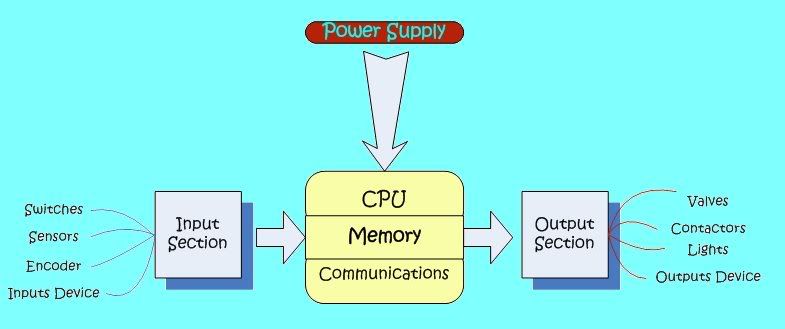A PLC consists of two basic sections: CPU and Input/Output.
The CPU, which controls all PLC activity, sequence program, faulty, etc. The input/output system is physically connected to field devices (e.g., switches, sensors, etc.) and provides the interface between the CPU and the information providers (inputs) and controllable devices (outputs).

CPU reads data from input module, then executes in its systems. Finally, based on the program, CPU writes to output module. Some operation, CPU need communication module, to communicate others device (e.g, HMI, Smart Device, Others PLCs). To many protocol can used in communication, like profibus, modbus, fieldbus, anybus, etc.
Discrete Operational
In this operational, PLC just know 1 or 0 (zero), only digital system. In practical, like limit switch, push button, switch, lights, dry contact from relay or contactor.
Analogue Operational
Analogue defined as continuous system. PLC can knows continuous system as voltage, current, RTD, Thermocouple, etc. In example, a temperature sensor have signal 0-10 volt, a based on measurement of an actual temperature. After PLC processing then, PLC give the output module 0- 100 % values for control valve. So PLC monitoring the continuous signal.
This process called process control.
Communication
PLC need communication for programming or communicate to others device. Protocol needed in this function, such as Modbus, Profibus, Fieldbus, or simply communication like Serial 232 or 485.
Generally PLC consist 2 type : PLC compact and PLC modular. PLC compact, actually in one package include CPU, I/O and communication. In example like Direct Logic 05, S7 200 from Siemens. PLC modular, each module consist one function, like CPU, Communication, I/O.